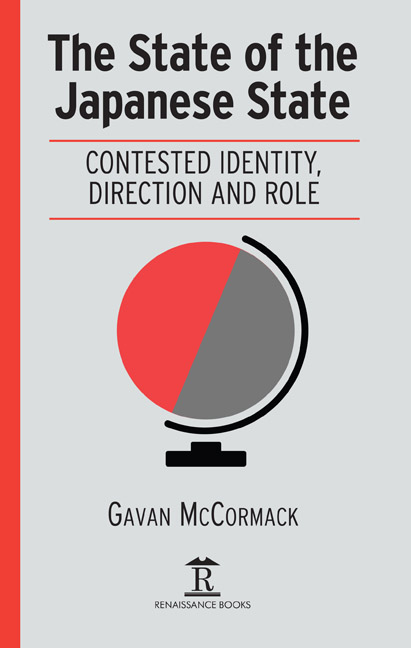Book contents
- Frontmatter
- Contents
- Preface
- Chapter 1 The Improbable Package
- Chapter 2 The Client State
- Chapter 3 The Client State’s Client State
- Chapter 4 Okinawa – State Violence and Civic Resistance
- Chapter 5 Around the East [China] Sea
- Chapter 6 The Construction State
- Chapter 7 The Constitutional State
- Chapter 8 The Rampant State
- Chapter 9 Conclusion
- Afterword
- Index
Chapter 5 - Around the East [China] Sea
Published online by Cambridge University Press: 04 May 2022
- Frontmatter
- Contents
- Preface
- Chapter 1 The Improbable Package
- Chapter 2 The Client State
- Chapter 3 The Client State’s Client State
- Chapter 4 Okinawa – State Violence and Civic Resistance
- Chapter 5 Around the East [China] Sea
- Chapter 6 The Construction State
- Chapter 7 The Constitutional State
- Chapter 8 The Rampant State
- Chapter 9 Conclusion
- Afterword
- Index
Summary
CHINA
HISTORIANS WITH AN eye to the longue durée of the Asia-Pacific region ponder over what might succeed the three grand regional frames: the Pax Sinica Chinese tribute world of roughly 500 years to the late 19th century, the ill-fated Japanese project, Pax Nipponica, from roughly 1895 to 1945, and the ongoing Pax Americana from 1945 to today. This is not the place for an exhaustive discussion of China, but some brief reference is inescapable, especially as Japan comes to face the fact that the San Francisco containment policy it has held to with such fervor for so long has not “contained” China and no longer seems likely to.
The post-war Japanese state was built on the assumption that the world would continue to spin on a US axis, as it had at the time of San Francisco (1951) when the US accounted for roughly half the world's economic output and its military might was unquestioned. That preeminence underpinned the evolution of East Asia over the subsequent six decades, and it was common for the region's growth and prosperity to be attributed to it.
Gradually, however, as East Asia became the center of world economic dynamism, the institutional frame set at San Francisco came to be more-and-more at odds with the economic base. During its explosive growth years from early 1990s, China multiplied its per capita GDP many times. As a proportion of global GDP, it rose vertiginously, from 2 per cent in 1990 to approximately 17 per cent in 2016, towards a predicted 28 per cent in 2030 remaining on that figure in 2060, while Japan correspondingly declined, from 15 per cent in 1990 to below 10 per cent in 2008, around 4.3 per cent in 2015 and an expected 3 per cent in 2060. It meant that the China whose economy was approximately half that of Japan in 1990 was four times greater in 2016 (in PPP or purchasing power parity terms). While China and India will both see “more than seven-fold increase of their income per capita over the same period,” the OECD and US shares of the world economy are likely to decline (from 65 to 42 per cent and from 23 to 16 per cent respectively).
- Type
- Chapter
- Information
- The State of the Japanese StateContested Identity, Direction and Role, pp. 120 - 166Publisher: Amsterdam University PressPrint publication year: 2018



